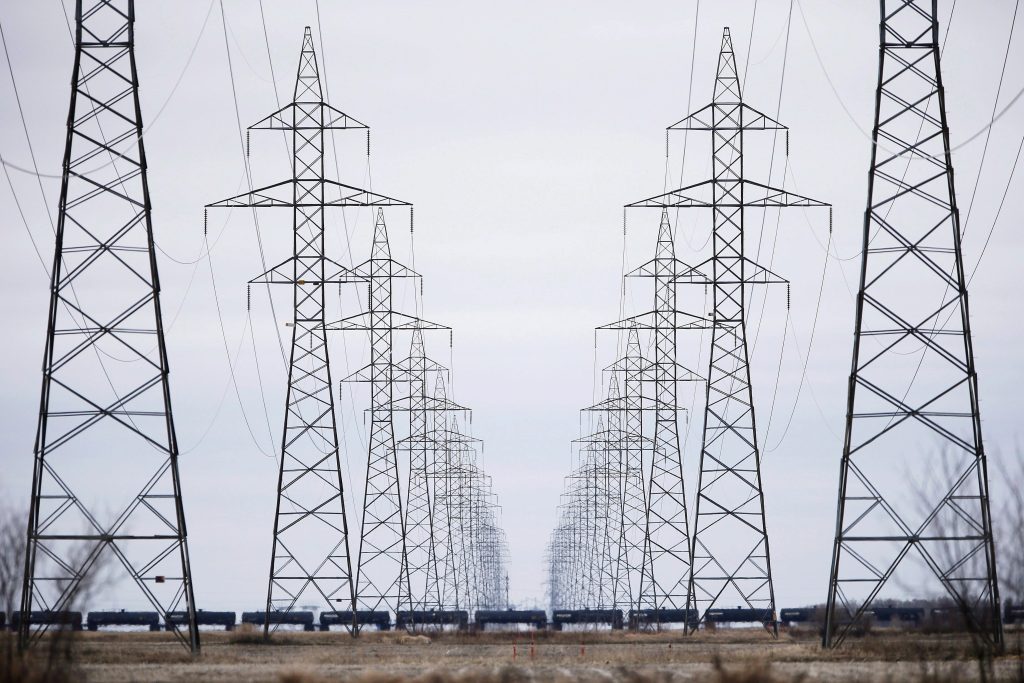Manitoba Hydro power lines are photographed just outside Winnipeg on May 1, 2018.JOHN WOODS/The Canadian Press
A plan by the Manitoba government to connect several northern communities to the province’s power grid addresses some key issues, but might open the door to industrial development that could harm sensitive hunting and fishing grounds in the region, a First Nations leader says.
Chief Jonas Michael Sewap of Barren Lands First Nation said he is concerned that construction could lead to mining operations and a permanent road to his community.
Sitting about 930 kilometres northwest of Winnipeg, the First Nation is part of the province’s “Diesel Zone” – a group of four First Nations that only use polluting diesel electrical generators from Manitoba Hydro for power.
Barren Lands First Nation and other communities depend on the Seal River Watershed Area in Northern Manitoba. The province approved a feasibility study in March on protecting the land from development.
“We rely on that area for hunting and fishing, because pretty much that area is the wildest place you could be than anywhere else in Canada, because everywhere in Canada it’s all disturbed,” Mr. Sewap said.
Because his First Nation is so remote, fuel is transported over winter ice roads to stock up for the year. When the muskeg thaws, people have to travel either by plane or boat to leave the community. Mr. Sewap said he is now also worried that warming winters because of climate change won’t be cold enough to use the ice roads to fuel the power station.
While the diesel generator is reliable when it has fuel, Mr. Sewap said that having a line to the main power grid would improve how well people could heat their homes during the winter, and it could also lower hydro rates for the community. He said his hydro bill has reached as much as $180 a month, which is unaffordable for many in the First Nation.
It’s not the first time that his community has had discussions about connecting to the power grid. Mr. Sewap said the community spoke with the provincial and federal governments 10 years ago, but those plans fizzled out after all parties had leadership changes.
Mr. Sewap said there have not been any recent discussions, and the first he heard of the new plan was when Premier Wab Kinew announced it at a press conference this week.
On Tuesday, Mr. Kinew said the province would “repatriate” 500 megawatts of power by not renewing expiring U.S. export contracts. The next day, he signed an agreement with Nunavut Premier P.J. Akeeagok to provide 50 megawatts to electrify communities in Nunavut and Northern Manitoba. The move would add extra power to Nunavut through the proposed 1,200 kilometre Kivalliq Hydro-Fibre Link line. The project is estimated to cost $1.6-billion, and both premiers are asking the federal government to chip in funding.
Shovels are expected in the ground by 2028 and Inuit-owned Nukik Corp., which is overseeing the project, hopes to begin operations by 2032.
Mr. Kinew said his government will work with the Manitoba First Nations to get off diesel power, to determine the project route and to manage the caribou herds.
Manitoba Keewatinowi Okimakanak Grand Chief Garrison Settee said he’s been advocating for the four communities to get connected to the power grid for seven years, but said past governments lacked the political will to do it. MKO is an advocacy group that represents 26 Manitoba First Nations.
“It’s inconceivable that we’re living in this point in time where we still have four communities that aren’t connected to the grid, and yet we have been exporting power and energy to outside sources,” he said.
Any government project to expand the power grid needs to account for the lands First Nations people use and how to compensate them, Mr. Settee said. He remembers seeing the environmental devastation when Manitoba Hydro did projects in his own community of Cross Lake. Hunting grounds were destroyed and fishing spots were polluted, he said.
Malcolm Bird, a University of Winnipeg associate political sciences professor, said there’s clear benefits to bring power north for those communities, including as an act of reconciliation, improving economic development and getting away from burning diesel.
But because of Manitoba Hydro’s precarious financial and infrastructure conditions, it raises the question of whether it’s the best of use of resources, he said.
The Crown Corporation has nearly $25-billion in debt and needs $31-billion to upgrade its aging infrastructure. Mr. Bird says not renewing electricity export contracts with the U.S. may not be the most prudent move, considering Manitoba Hydro’s debt and the projected provincial deficit this year of $2-billion.
“This is a major problem, and this government is solving its problems by spending money, and this could end very badly for us,” he said.
The post Manitoba looks to connect remote communities to power grid appeared first on World Online.

